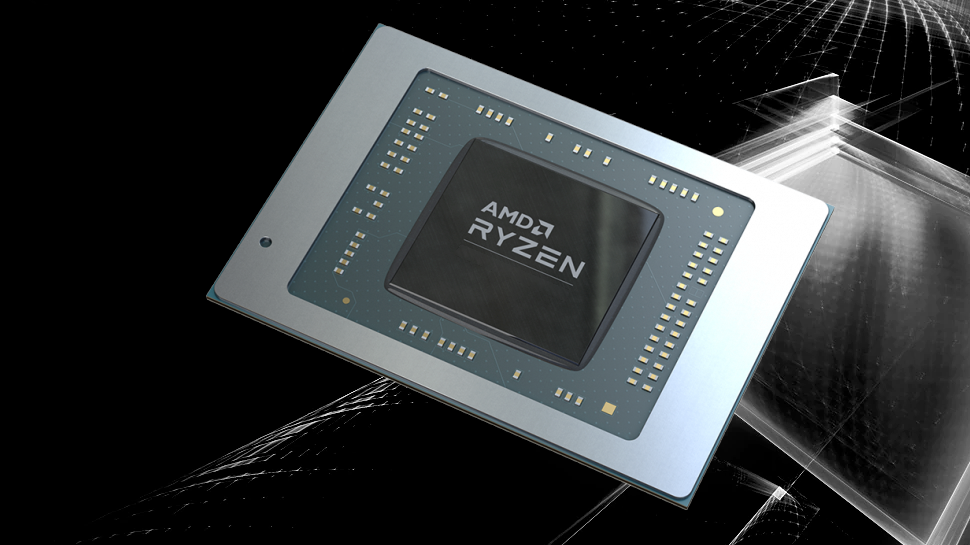AMD is allegedly working on Arm-based "Sound Wave" APUs for Microsoft's Surface laptops next year

AMD is allegedly working on an Arm-based SoC, codenamed "Sound Wave", in a bid to power Microsoft's Surface laptops next year, claims Kepler via ITHome. Moving away from traditional x86 designs, Sound Wave is reported to feature the Arm ISA and will likely leverage off-the-shelf Cortex cores. Details on exact specifications, availability, and pricing remain under wraps, so it's wise to approach this leak with caution.
Looking beyond its historical Wintel roots, Microsoft has made a clear push towards the WoA (Windows on Arm) platform. This was put into effect with the firm's partnership with Qualcomm, which yielded the Snapdragon X family. This was likely a significant catalyst that motivated Intel to engineer an efficiency-first alternative: Lunar Lake. In fact, even Nvidia is entering the WoA space with its rumored N1 family of SoCs, developed in partnership with MediaTek.
The strong success of the Nintendo Switch, powered by Nvidia hardware, underlines a lucrative market for Arm-based handhelds. These Sound Wave SoCs, if true, could be a foundation for the Steam Deck 2, but I must emphasize this is highly speculative. Microsoft's current-generation Surface Pro 11 and Surface 7 laptops are powered by chips from Qualcomm and Intel. AMD's existing gap in efficiency compared to Snapdragon X, Lunar Lake, and likely soon-to-launch N1 offerings could be bridged with these Arm-based SoCs.

It is suggested these APUs will slot into the FF5 socket, succeeding FF3, which is home to the Steam Deck's Aerith/Sephiroth APUs. Regarding the integrated graphics, AMD should continue to employ its established Radeon IP instead of adopting Arm's Mali graphics solutions.
Lunar Lake sticks to x86 roots, and while it might be inferior in performance to Arm-based equivalents from Qualcomm and Apple, it comes extremely close in efficiency, even exceeding them in battery endurance tests. That being said, Lunar Lake wasn't exactly cheap for Intel, including expensive manufacturing with TSMC's N3B process, Foveros 3D packaging, on-package LPDDR5x-8533 RAM, and next-generation IP blocks like Xe2-LPG for graphics. This is why ex-CEO Pat Gelsinger characterized Lunar Lake as an expensive one-off design.
So, AMD's decision could be driven by the high costs and complexities associated with building an ultra-efficient x86 design, especially for the sub-10W range, and Microsoft's growing push for Windows on Arm and AI-first PCs. Likewise, can Microsoft address the teething optimization and compatibility issues that still plague the WoA ecosystem by then? We should reserve our judgments until AMD actually reveals these products, assuming they're even in the pipeline. While AMD could reveal more at CES 2026, we'll probably have to wait a bit longer as Microsoft tends to announce new Surface products during the summer season.
Follow Tom's Hardware on Google News to get our up-to-date news, analysis, and reviews in your feeds. Make sure to click the Follow button.
Get Tom's Hardware's best news and in-depth reviews, straight to your inbox.

Hassam Nasir is a die-hard hardware enthusiast with years of experience as a tech editor and writer, focusing on detailed CPU comparisons and general hardware news. When he’s not working, you’ll find him bending tubes for his ever-evolving custom water-loop gaming rig or benchmarking the latest CPUs and GPUs just for fun.
-
rluker5 Isn't Microsoft already having enough issues with ARM? https://www.windowscentral.com/hardware/surface/amazon-flags-surface-laptop-7-as-a-frequently-returned-item-warns-buyers-to-check-reviews-firstPeople look for plug and play with stuff like Microsoft surface and Apple. They don't like having DIY projects.Reply -
JamesJones44 Reply
The important thing is to actually read the reviews. While some are complaining about compatibility, it sounds like there are a lot of other issues. Keyboard, bad charger, bricking, track pad fails, etc.rluker5 said:Isn't Microsoft already having enough issues with ARM? https://www.windowscentral.com/hardware/surface/amazon-flags-surface-laptop-7-as-a-frequently-returned-item-warns-buyers-to-check-reviews-firstPeople look for plug and play with stuff like Microsoft surface and Apple. They don't like having DIY projects.
It sounds like beyond compatibility, this thing has some serious quality issues. -
bit_user Reply
I read that it would be based on Zen 6, which is kinda the point. Otherwise, it doesn't make a whole lot of sense for AMD to jump into this market.The article said:Sound Wave is reported to feature the Arm ISA and will likely leverage off-the-shelf Cortex cores.
Or, given Microsoft's new love for ARM, maybe they decided the next XBox needed to have ARM cores, leading AMD to develop its own ARM cores, in order to compete for that business.The article said:These Sound Wave SoCs, if true, could be a foundation for the Steam Deck 2, but I must emphasize this is highly speculative.
I also think AMD wants to play in the the ARM server market, since it looks like that's near a tipping point. -
usertests Reply
That was a fail leak. It was leaked as ARM months ago.bit_user said:I read that it would be based on Zen 6, which is kinda the point. Otherwise, it doesn't make a whole lot of sense for AMD to jump into this market.
Why bother making it? Because someone wanted it, apparently. Although off-the-shelf cores aren't exciting, they can use their graphics IP, which has already been paired with ARM before in Exynos.
Funnily enough, the "Bumblebee" 2+2+2 Zen 6 APU sounds like a more interesting chip, targeting similar low power devices. Both Sound Wave and Bumblebee were leaked by MLID. -
Notton Lunar Lake goes to show that x86 can do low power just fine, but it still sucks at ultra low power standby.Reply
Where as ARM does both well.
Not that Microsoft has been able to capitalize on the efficiency gains because their OS is trash.
For example, my cheapo entry level android phone does about 5~7 days on a single charge.
I can only achieve 7 days on a Win11 laptop if I turn it off, and even then it's still no guarantee. -
usertests Reply
I'll be interested to see how AMD's rumored "LP" cores play out in desktop and mobile. Looks similar to Intel's LPE cores in that they are not located on a compute die, so the compute dies could be turned off completely during idle if managed properly.Notton said:Lunar Lake goes to show that x86 can do low power just fine, but it still sucks at ultra low power standby.
Where as ARM does both well. -
dalek1234 Reply
By default, Windows doesn't completely turn off when turned off. It continues to run some stuff in the background so that when you restart the laptop, it take less time to load because some stuff was unloaded.Notton said:.. I can only achieve 7 days on a Win11 laptop if I turn it off, and even then it's still no guarantee.
Disable "turn off fast startup" in Windows Power Options. -
TerryLaze Reply
Heck no, first of all there will probably not be a next xbox.bit_user said:Or, given Microsoft's new love for ARM, maybe they decided the next XBox needed to have ARM cores, leading AMD to develop its own ARM cores, in order to compete for that business.
Secondly game devs (including MS) still hurt from having to code games for both architectures, that's the only reason we have x86 in consoles now in the first place, so they can only make one version of games.
These Sound Wave SoCs, if true, could be a foundation for the Steam Deck 2, but I must emphasize this is highly speculative.
All of the above times infinite for the steamdeck, valve spend so much money on making games run on x86 linux they will not start that whole procedure again for arm.